Some bugs have long legs; others look like they have funny shoes on, while others might stink the place up for an hour. Bugs come in all shapes, colors, and sizes. They can also do fantastic tricks and even hide in plain sight. To say bugs are interesting is an understatement. They are similar to what having tiny aliens walking around everywhere must be like. Bugs even come with their very own superpowers in one way or another. Some even have amazingly long antennae! Can you guess why? Let’s find out!
1. Asian Longhorn Beetles (Anoplophora glabripennis)

Any species of longhorn beetle wins the contest for most extended antennae by a long shot!
©letspicsit/Shutterstock.com
This harmless insect grows to one or one and a half inches long and is invasive in the U.S. These cute beetles are a danger to our hardwood forests. The beetles have comical-looking feet that appear to be wearing shoes. They are native to China and Korea, though they originated in Japan in the 1800s. They were introduced to North America on wood pallets and packing material on cargo shipments. The beetles have long antennae to smell, taste, and feel their environment for danger.
2. Crickets (Grylloidea)
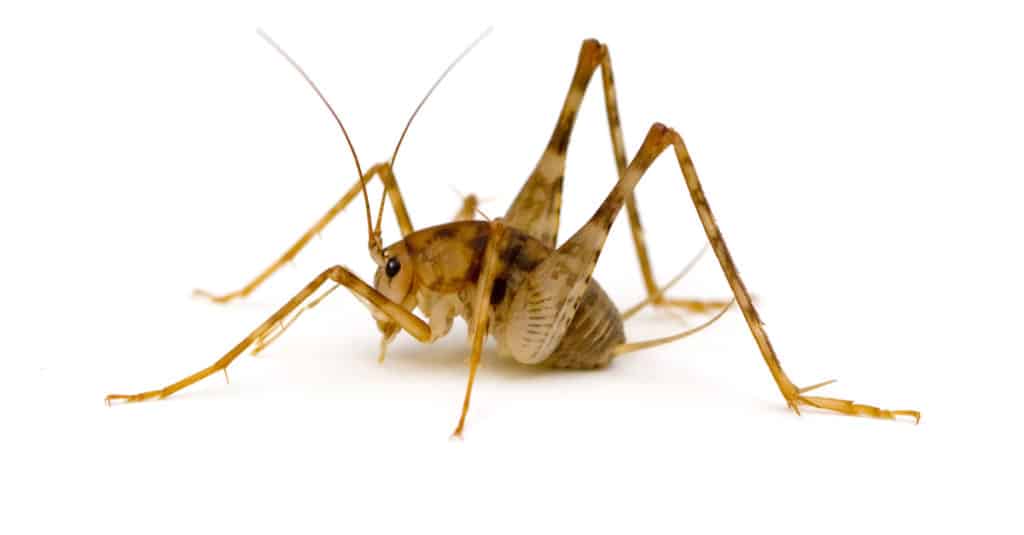
All crickets have long antennae, though it stands out more on the compact camel cricket.
©Melinda Fawver/Shutterstock.com
Crickets have been worldwide in every country except Antarctica. Their exceptionally long antennae are sensory organs that check the air for disturbances such as prey or danger. They also help in picking up clues of the sex of nearby crickets. The long antennae can also pick up scents much more powerfully than our noses ever could.
3. Katydids (Tettigoniidae)

The cheerful katydid is also known as a bush cricket to some!
©iStock.com/ePhotocorp
Katydids have some of the most extended antennae in the entire world of bugs. These interesting bugs make up over 8,000 different species found worldwide! Their massive antennae help them find their way around in the dark since they are nocturnal, and bumping into the wrong thing could end with them becoming someone’s dinner. Some of the more giant katydid antennae can measure four inches long! These grasshopper-like bugs are everywhere, from long grass in fields to suburban gardens. Despite what some may believe, katydids are harmless to plants and gardens. They eat many types of insects known to cause damage to garden plants. The katydid sometimes consumes small amounts of grass or some plants, though it is never enough to do any actual harm.
4. Wheel Bug (Arilus cristatus)
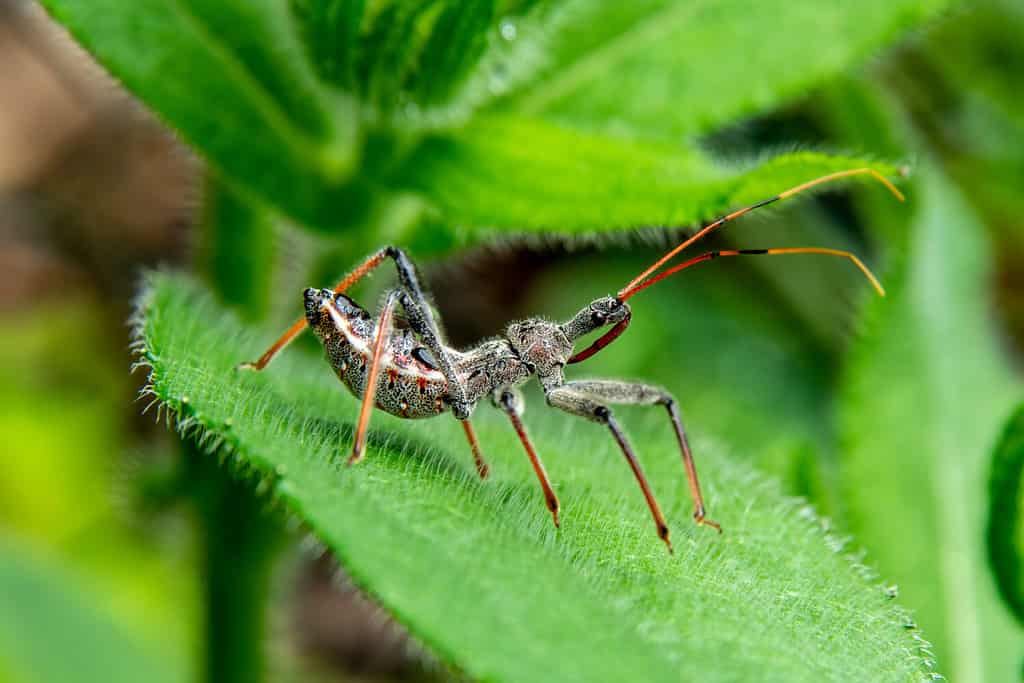
Like all assassin bugs, wheel bugs have long antennae used to hunt caterpillars.
©Georgi Baird/Shutterstock.com
Wheel bugs are interesting all the way around. Their extra-long antennae with bent ends add to their oddness. Unlike some assassin bugs who may gather in large numbers, the wheel bug is solitary and slow-moving. They are common in North America during the summer. The wheel bug is an assassin bug that can lead to a painful bite if you try to handle it. They feast on caterpillars, which they bore into with their extra-long mouth receptacle. The wheel bugs also emit a stinky fluid to send their would-be assailant packing. Their antennae serve the purpose of smelling out prey or other wheel bugs. It also tests the environment of movement.
5. American Cockroaches (Periplaneta americana)
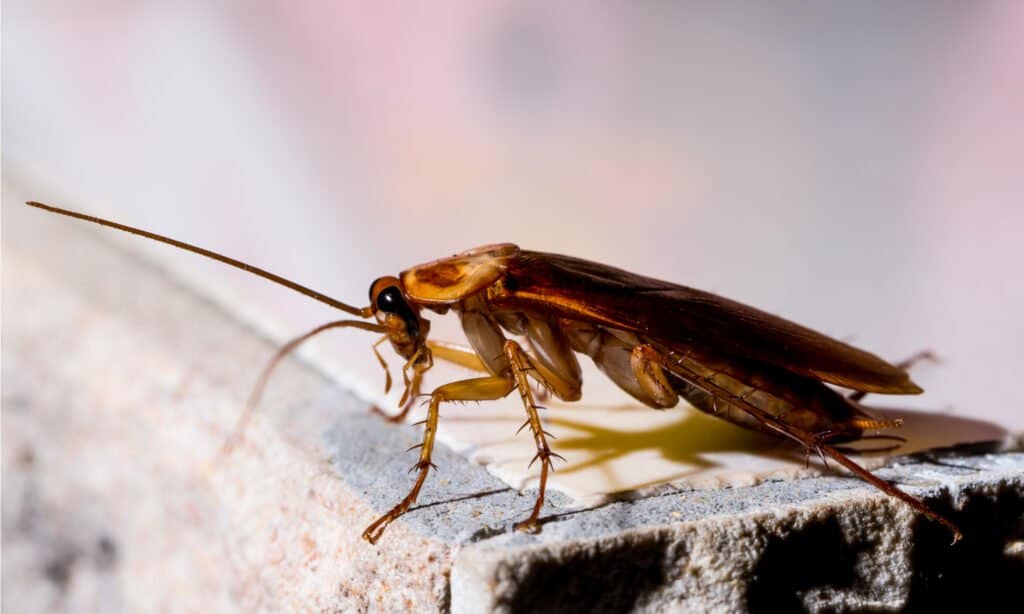
Cockroaches might not be on everyone’s list of favorite bugs, but they did make our list of most extended antennae!
©PitukTV/Shutterstock.com
American cockroaches, also sometimes called the palmetto bug or sewer roach, are large, flying, reddish brown colored visions that end up as nightmares to some. They are swift on foot and in the air. They are not typically drawn to food like the other more severe cockroaches, but they seek out moist areas like under homes and can frequently be found at coastal locations. Like the other bugs on our list so far, their antennae serve the purpose of checking out the environment for potential hazards. The antennae also help them find food and communicate with other nearby roaches. This might make the little guys even creepier when you imagine them talking to each other, or maybe it makes them seem more exciting and cute.
6. Pine Sawyer Beetle (Monochamus galloprovincialis)

Pine sawyer beetle (
Monochamus sutor) in Tver Province, Russia. These types of beetles eat conifer trees.
©Mikhail Kochiev/Shutterstock.com
The pine sawyer beetle or black pine sawyer beetle deals the final blow to severely damaged or dying trees. They do not cause damage to healthy, living trees, despite confusion. The beetles lay eggs in the dying tree’s bark, which, when hatched, destroys the tree. They are widespread throughout Europe. They are sometimes confused with Asian longhorn beetles, though the sawyer beetles are much smaller.
The pine sawyer beetle uses its long antennae to sniff out dying pine trees to lay eggs in. Their exceptionally long antennae can be three times the length of their bodies! That’s like being a 5-foot-tall woman with 15-foot-long hair.
7. Acorn Weevil (Curculio glandium)

Acron weevils have large eyes, long snouts, and long antennae.
©iStock.com/Tomasz Klejdysz
The cute acorn weevil uses her long snout, a rostrum, to bore a hole into the acorn to lay eggs. The larva may stay in the acorn for up to five years before adulthood! As adults, the weevils only live a few months to reproduce and start the process over again. At the end of the rostrum are saw-like teeth used for chewing a hole in the acorn. Their long antennae originate from the extra-long snout and help the weevil reach acorns. Some acorn weevils have long snouts, whereas others have short snouts. Several species of nut weevils with similar builds are native to Europe and North America.
8. Timberman Beetle (Acanthocinus aedilis)
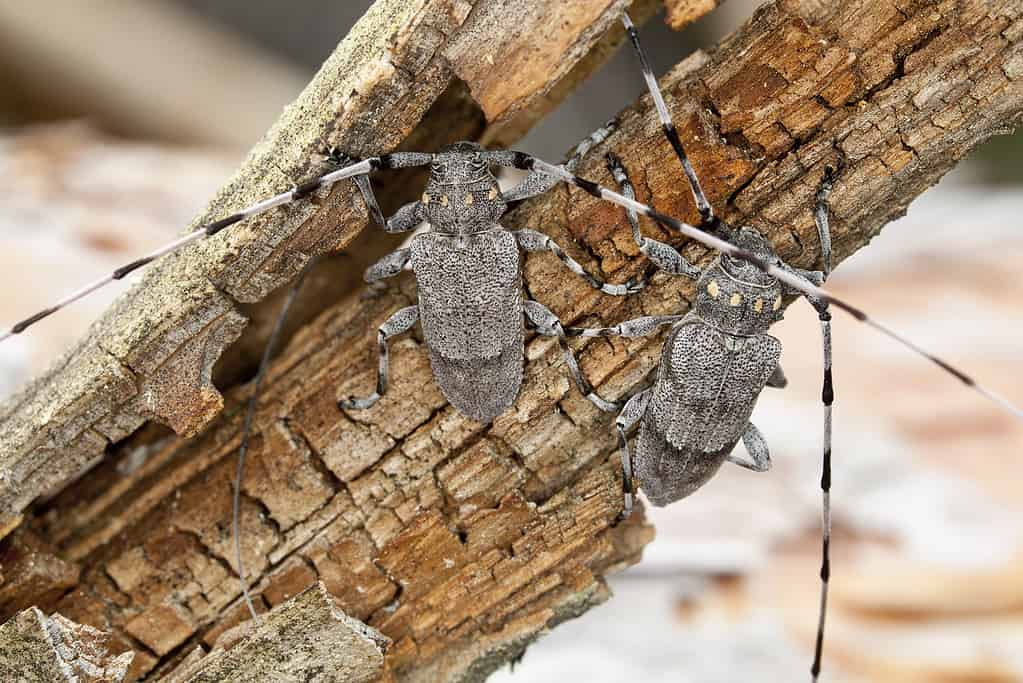
Timerman beetles have extra long, striped antennae.
©Henrik_L/iStock via Getty Images
Some say the timberman beetles‘ antennae are like horns that the beetles use to measure sticks they walk on. The male timberman beetle’s antennae can be four times the length of their bodies, making these beetles one insect with some of the most extended antennae in their insect world. Their antennae are three inches long! When males fight over females or territory, they try to cripple each other’s antennae to shorten them. The antennae are functional sensory organs that help the beetles sniff out dead wood to nest in. These beetles are found in Europe, Russia, and Asia.
9. Caddisflies (Trichoptera)

Caddisflies spend most of their lives in larva form. As adults, their life span is concise.
©ViniSouza128/iStock via Getty Images
The semi-aquatic caddisfly has very long antennae, although it varies from species to species. These are commonly used as fishing lures, whether real or false. They are always found near waterways and are attracted to bright lights in the evening like moths. Their long antennae are hair-like in structure and are used for sensory needs like checking the water source for safety and cleanliness. They are an essential food for bats, with the adults living concise lives.
10. Dobson Fly (Corydalinae)
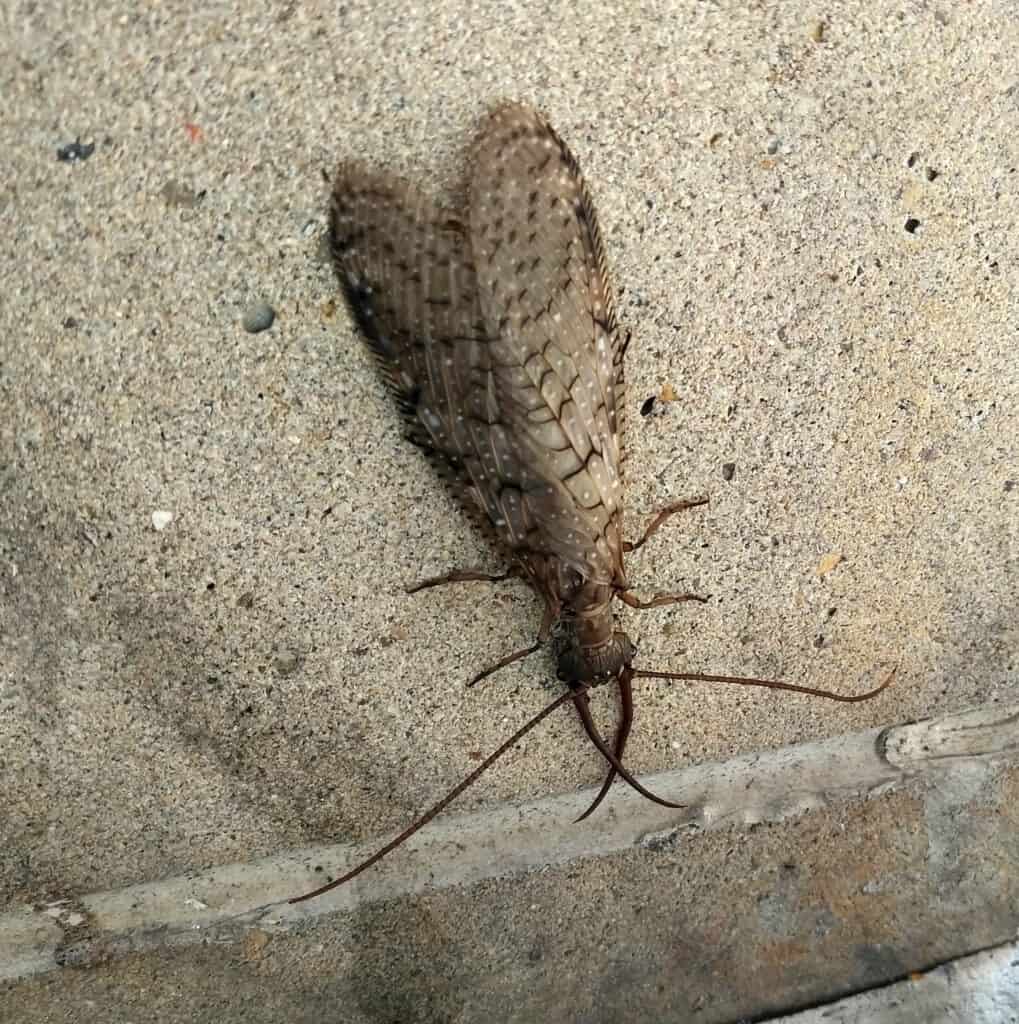
Dobsonflies may look terrifying but are harmless. The male pictured has pinchers for holding onto the female during mating, but they are useless to bite with. The females have miniature pinchers and can inflict a painful but medically insignificant bite.
©Josef Stemeseder/Shutterstock.com
The dobsonfly spends most of its life as a larva, called a hellgrammite. They remain in this stage for three years before emerging and pupating. The dobsonfly is short-lived. It is attracted to bright lights near rivers and streams in the summer. The dobsonfly can grow to over two inches long and has a large wingspan, adding to its terrifying appearance. As a last resort, they are capable of spraying a bad-smelling anal fluid to ward off predators. Their antennae are as long as their bodies and are used to search for a mate and find the perfect spot to lay eggs. The antennae have many segments.
The photo featured at the top of this post is © SIMON SHIM/Shutterstock.com
Thank you for reading! Have some feedback for us? Contact the AZ Animals editorial team.






